ESCAPE
In the footsteps of the King of Fook Island
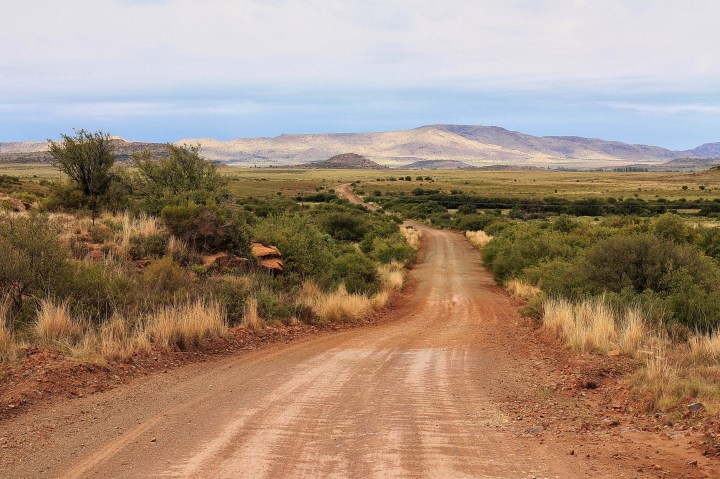
On a visit to the classy Battiss Art Gallery in Somerset East, we discovered the great Fook Island artist’s first book, ‘The Amazing Bushman’, published in 1939. We knew immediately where our next assignment would take us.
A month later, we went to a farm called Leliekloof – Valley of Art, somewhere in the middle of a massive sandstone circle surrounded by the settlements of Aliwal North, Molteno, Jamestown and Burgersdorp.
Clearly this was once a place a lot of people wanted to get to. There are many signs to it, but not all of the winding roads are suited for platkarre (sedans) anymore. So, taking it slow in our old diesel bakkie, we carefully followed a map provided by Leliekloof’s Minnie de Klerk.
The rough and magical road
The roads may be rough, but the scenery is worth it. This is remote mountain country, outlaw country and getting there is half the fun. You enter a world that geologists would know as the Stormberg Formation, the Molteno, one of the topmost layers of the Karoo Supergroup. Local landmarks carry legendary names like Witkop and Predikantskop.
Anyone who knows Clarens in the Eastern Free State would immediately recognise the sandstone formations, some baked hard by the volcanic dolerite intrusion of 182 million years ago.
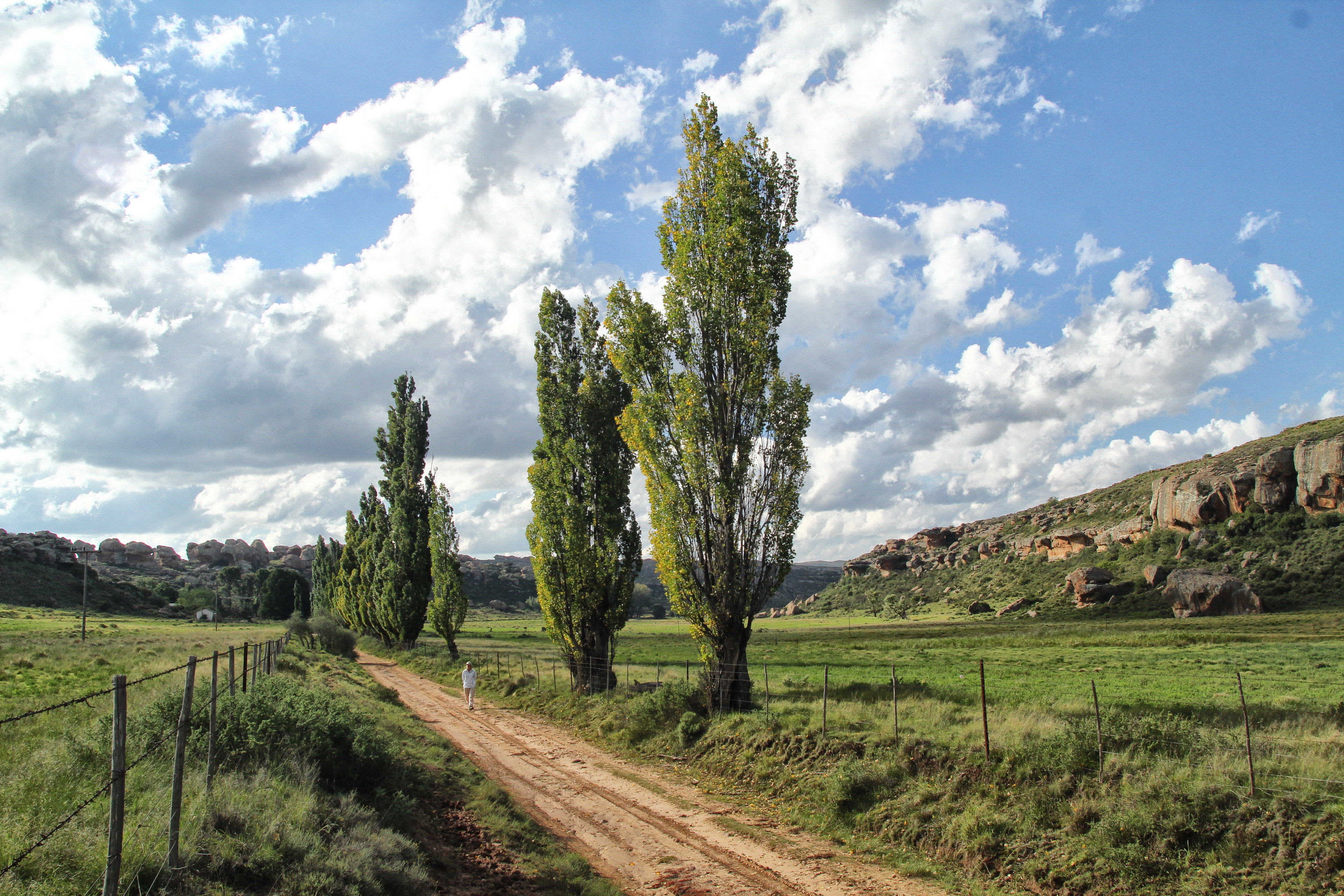
The winding backroads to the Valley of Art – Leliekloof Farm. Image: Chris Marais
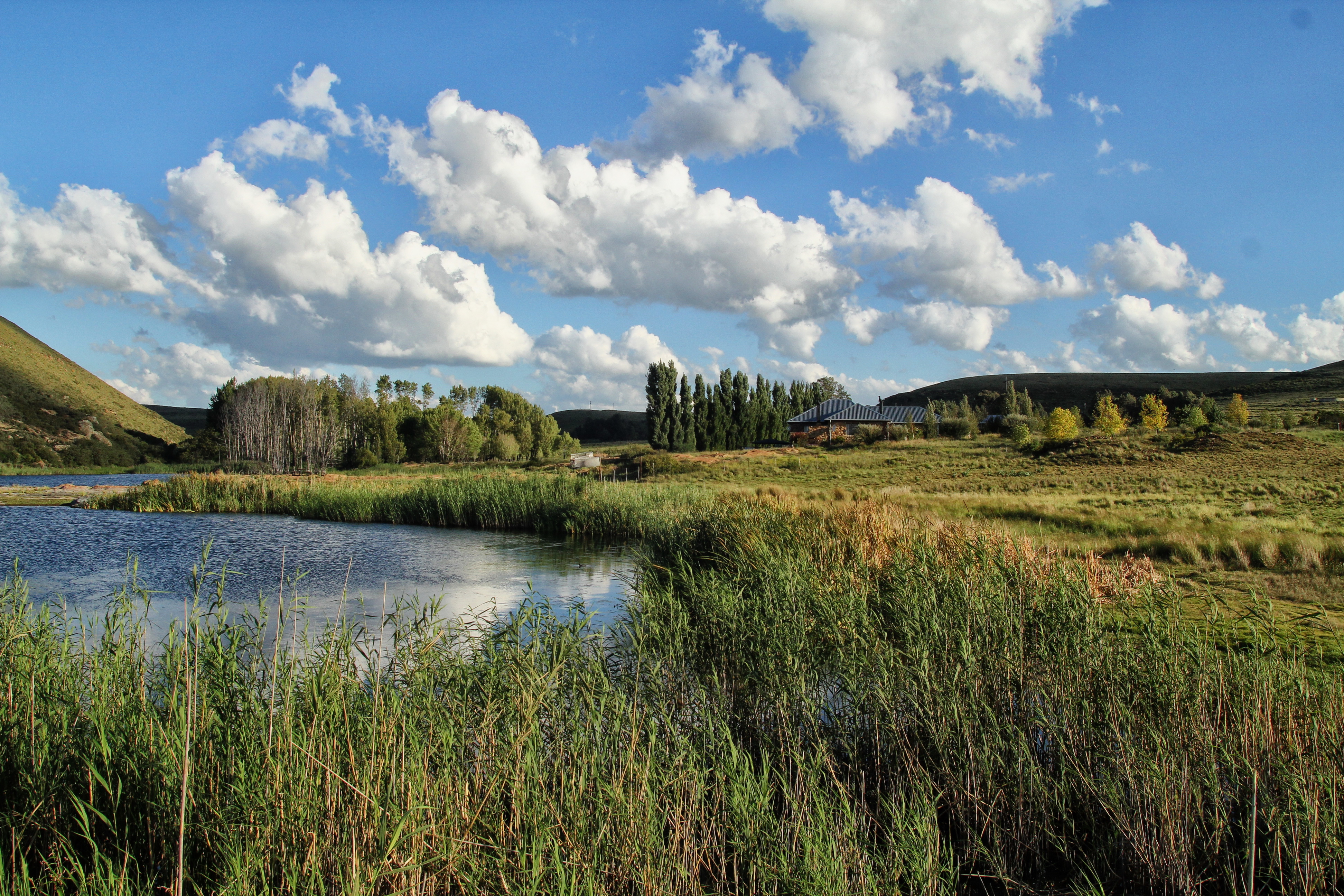
Leliekloof Farm. Image: Chris Marais
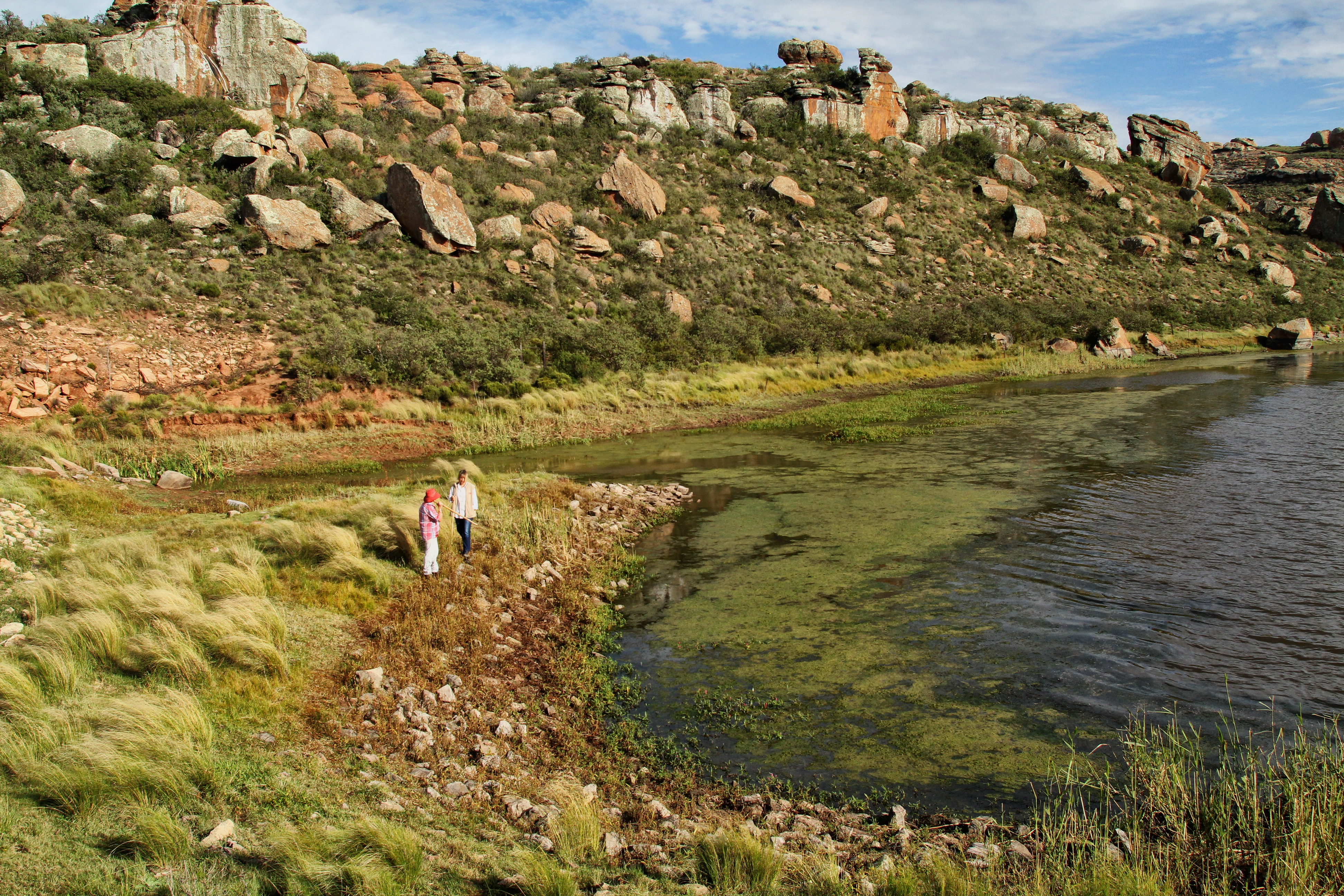
Leliekloof Farm. Image: Chris Marais
The landscape is made of conical krantz-topped hills and waving grasses, lots of ouhout, a distinctive woody shrub that is distantly related to the rose family; everything that thrives here is frost-resistant, some kind of survivor. There are the same Lombardy Poplars one would see between Bethlehem and the Golden Gate, often ragged from frequent lightning strikes. There are rosehip plants, brought to the district by missionaries wanting to save people from vitamin deficiencies.
At Leliekloof Farm, Minnie de Klerk and her husband Dries emerge from their sandstone-clad home, which lies at the edge of a trout dam.
“Welcome to the Valley of Art,” they say.
Back in the 1930s, a young and avant-garde Battiss was the first of his fraternity to feel the magic and realise the importance of Bushman art, which resides in thousands of caves, overhang shelters and on ironstone rock outcrops all over southern Africa.
Walter Battiss and the Valley of Art
Visits to sites like Leliekloof inspired Battiss’ work just as much as time spent with his friend and mentor, Pablo Picasso.
In The Amazing Bushman, Walter says of Leliekloof:
“The valley is a treasure-house of Bushman art. There are hundreds of paintings, most of them surprisingly fresh and clear. More valuable still, the artists who lived in this paradise produced work of amazing beauty. I remember the aesthetic emotional experience that befell me when I saw the Botticellis in Florence. It was my rare privilege to have the same experience in this Valley of Art.”
Our hosts know and love the immense and, in places, fast-fading, collection very well. Dries grew up in these parts and discovered the cave system back in his child-explorer days.
A Kingdom of Mountains
Just before sunset, we go on a meander about the farm. We head down a poplar-lined road towards a distant farmstead that serves as a guest house for big groups. It snugs just below a ridge of huge sandstone boulders that look like baby dragons hatching. There is no doubt that you are in a kingdom of mountains, where massive rock formations rule.
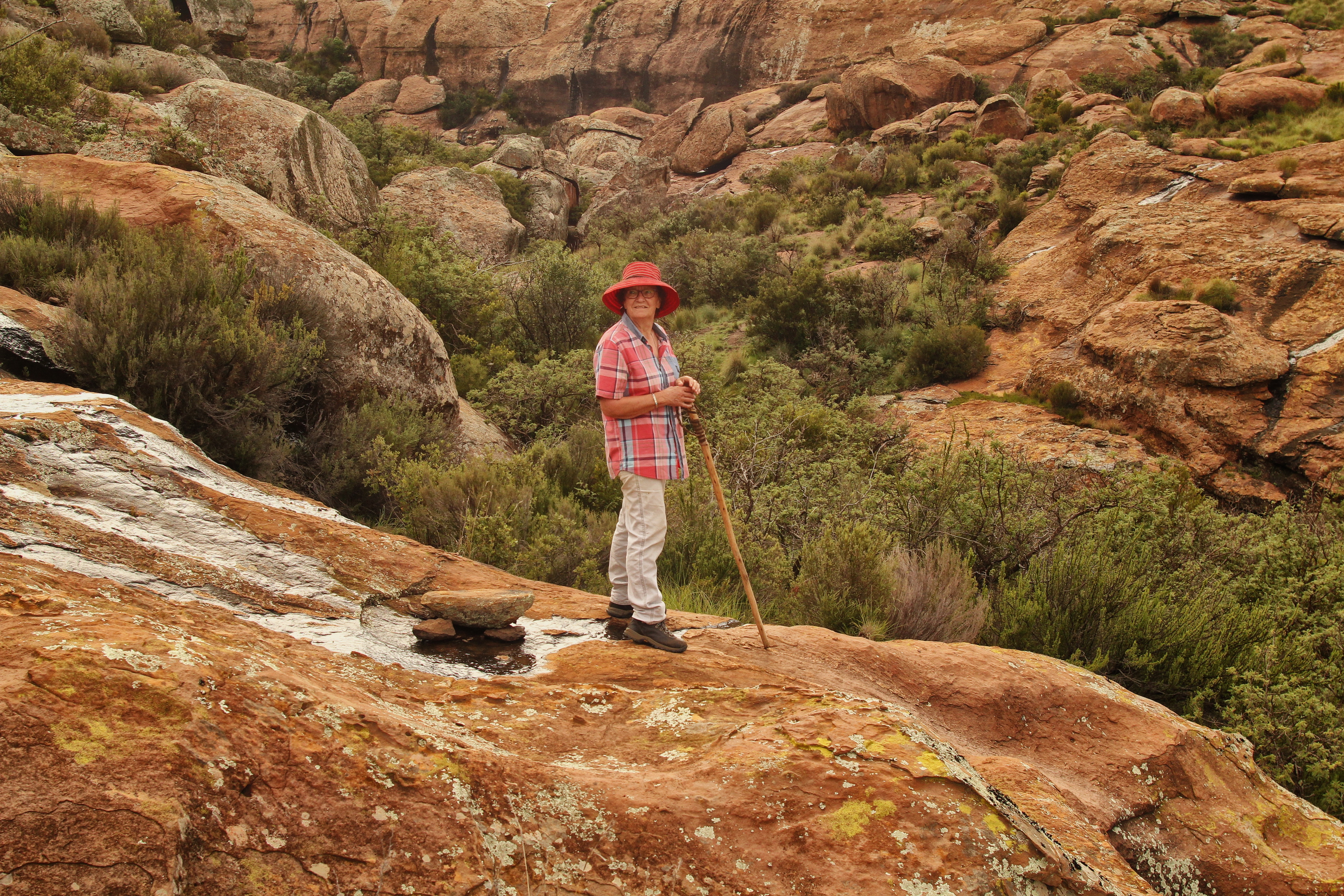
Minnie de Klerk on the rock formations on Leliekloof. Image: Chris Marais
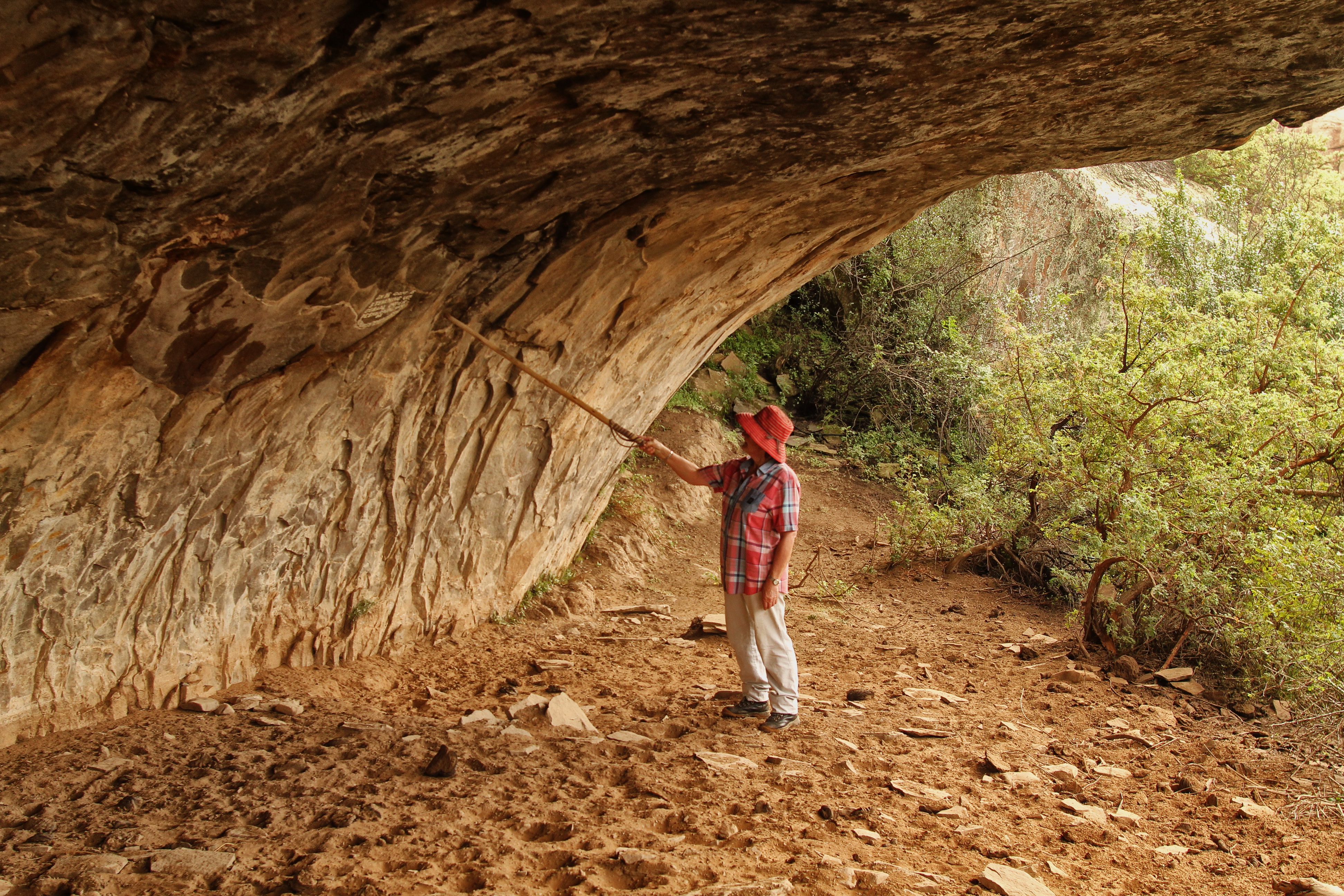
Minnie de Klerk – a faithful curator of a world-class gallery. Image: Chris Marais
Leliekloof lies at the heart of an ancient migration route. In summer, the heights of the Drakensberg and Malutis were grassy and well-watered and full of game, so that’s where the people (then the San or Bushmen) would stay during the warmer months.
As the days started getting shorter, they and all kinds of wild animal herds slowly descended the high slopes, heading towards the Karoo with its thickly vegetated plains and higher temperatures, the nutrition sealed into the grass with the hardening of the first frost.
Everyone passed through here. This must have been a gathering place for the clans, a kind of nagmaal spot for First People.
In the days when they were the only humans around, the Bushmen would have travelled about in many little families. These Eastern San (/Xam) Bushmen typically stayed in groups no larger than 15 or so. Minnie de Klerk explains that they sometimes swopped members when there were squabbles and unhappiness, so they kept in touch.
In fact, when Minnie de Klerk tells you about the artists who once worked here, she speaks in tones of admiration and familiarity – as if she were a faithful curator of a world-class gallery.
The next morning, she drives us up onto the farm heights in a sturdy Land Cruiser, via a rocky road they call the Khyber Pass. We stop near the gully, get out and prepare to hoof it down to the first cave.
There are no trails leading to the caves, and the going is tough in some areas. You find yourself clambering down and up sandstone ledges, negotiating slippery descents and tricky ascents. We follow our sprightly guide, who soon gets the nickname of Minnie the Mountain Goat. She is hill-fit and we are not.
The Mantis Dancers
Once you arrive at The Mantis Cave (AKA The Nguni Cave) you realise it was worth every huff and puff.
It looks and feels like a place you’d want to stay in. The little Skulpspruit runs not far below, clucking contentedly to itself. One can imagine children playing at the spruit edge, hunting little freshwater mussels, women talking, men smoking. And the “little painters” (as Walter Battiss fondly called them) busy as heck in the cave.
We spot the Mantis Dancers, somehow conveying movement and the mischievous joy of the Bushman god Kaggen. Nearby are women clapping hands, a shaman touching an animal, a beautiful little bokkie licking its hind leg and a Nguni cow, possibly depicting the presence of newly-arrived African tribes from the north. Everything is so precise and beautifully observed.
“I don’t know much about art, but I know what I like,” quips Chris, still busy over at his Mantis Dancers. “And this I love.”
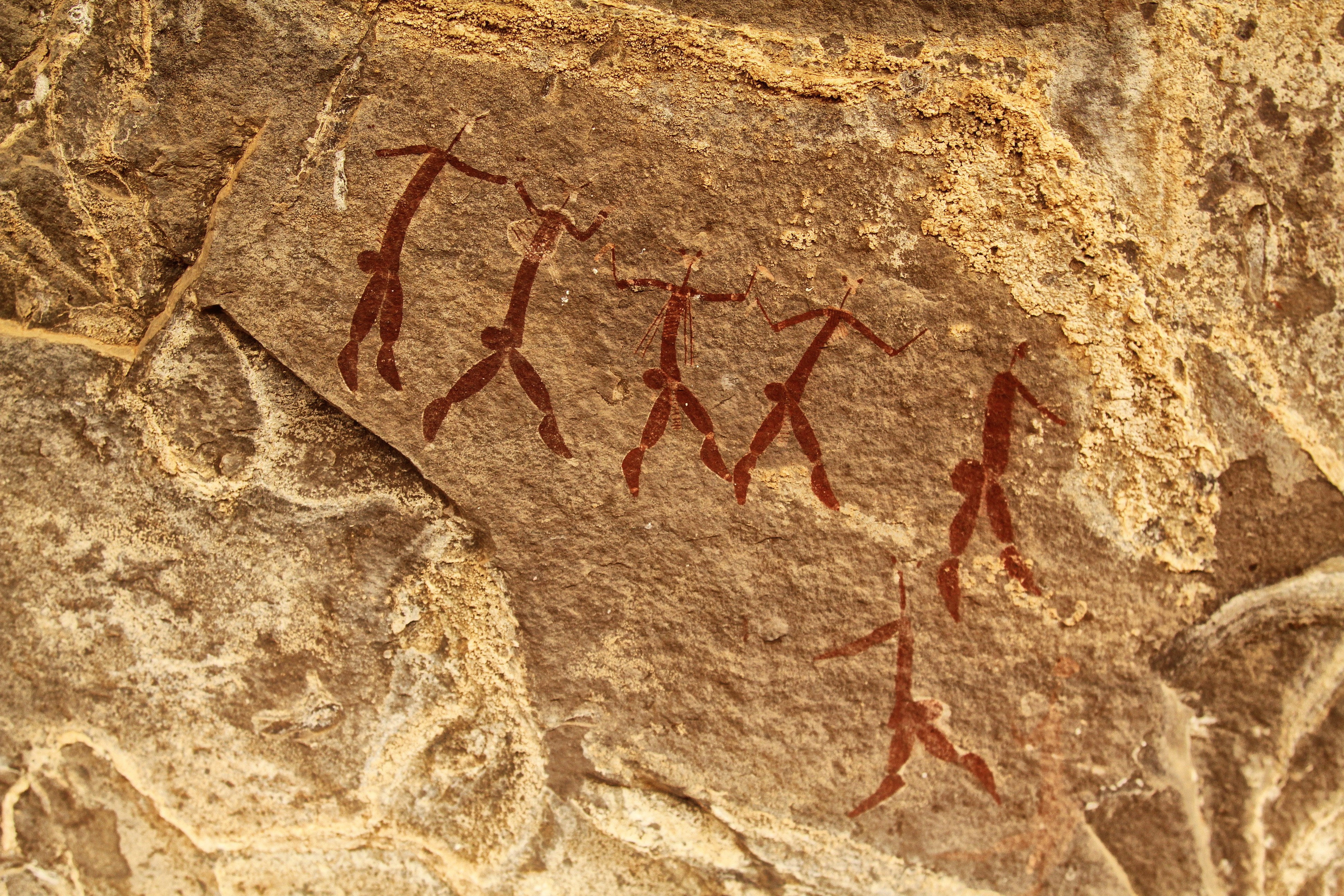
The Mantis Dancers that first caught the artistic eye of Walter Battiss. Image: Chris Marais
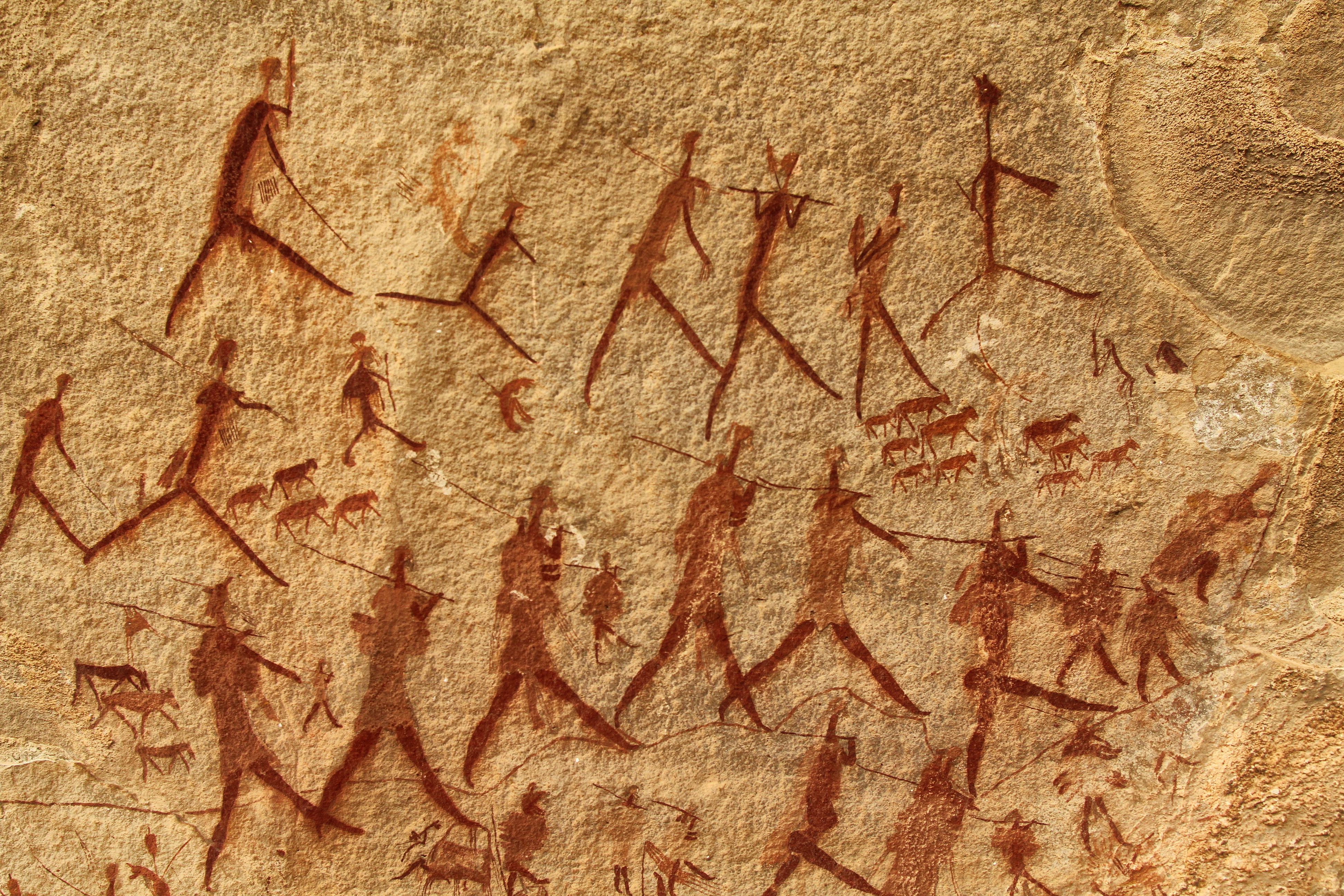
Trekking from the mountains to the dry lands – tableau in the Cave of the Dog. Image: Chris Marais
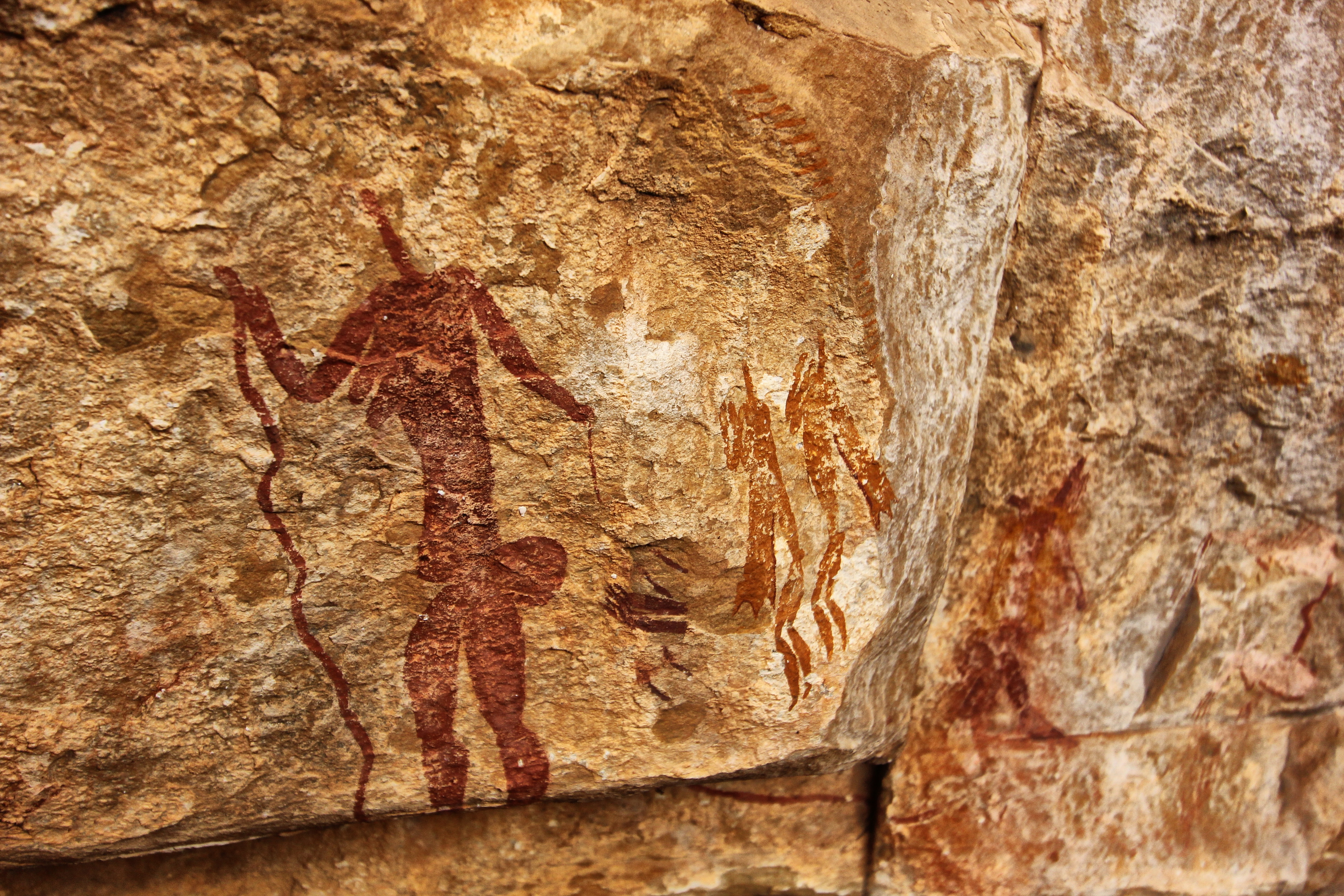
The female figure in the Eland Shelter holds what looks like a serpent or a stream of energy. Image: Chris Marais
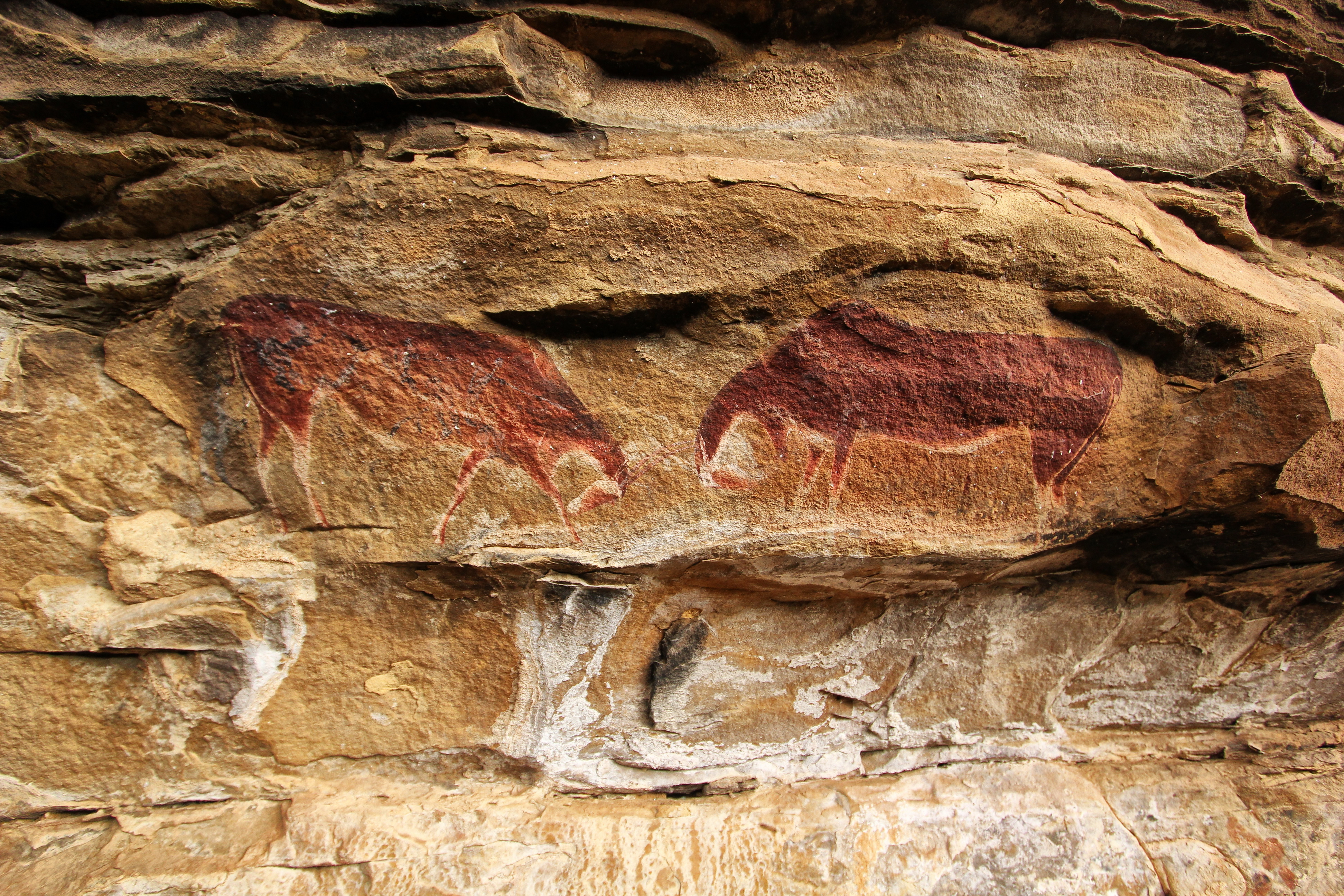
A confrontation of beasts in the Eland Shelter. Image: Chris Marais
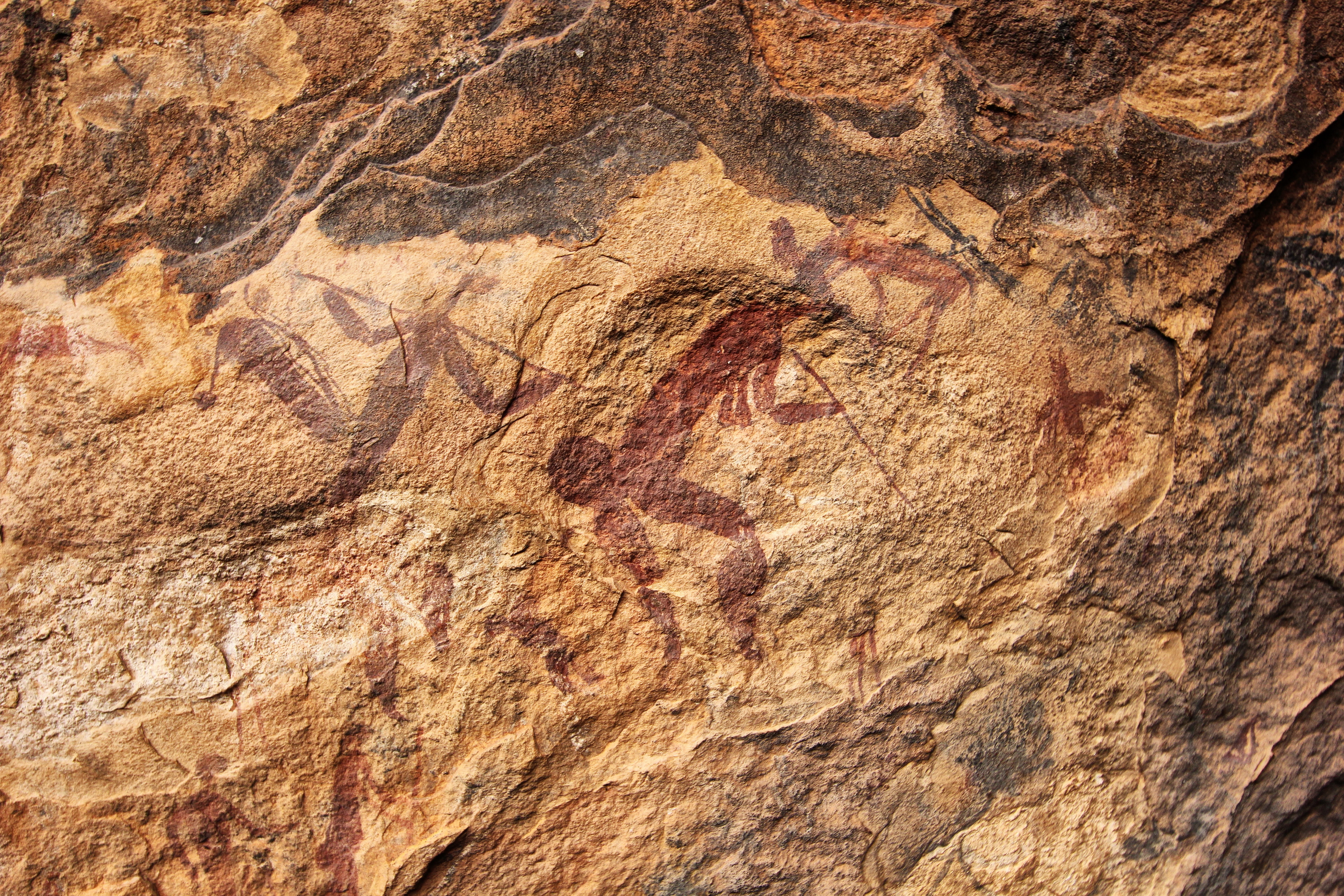
Whether depicting a hunt or a spiritual ceremony, this tableau segment in a southern Drakensberg cave is ancient art at its finest. Image: Chris Marais
Cave of the Dogs
Another long trek follows to the Cave of the Dogs. The wall art here faces south and gets little damaging sunlight, so the figures are still as fresh and glowing as they were hundreds of years ago.
The main focus in this cave is on a small area with big detail. It’s a Bushman Breughel: goats and dogs with travellers, a pregnant woman, a mother with baby, hunters and livestock, dancers, groups of onlookers, a woman on her back with something flowing in or out of her body, an eland with a nose bleed – all seeming to move in one direction.
We lunch on burgers back at the De Klerk home, rest up for a bit and head out again. We have another passenger this afternoon: Yster the wire-haired terrier. He’s been with his boss all night looking for jakkalse, but he’s ready, willing and able to go on another long ramble.
The Eland Shelter
The route to the Eland Shelter is rocky, sloping, uncomfortable and once again well worth the walk. Some of the remarkable works include a long line of celebrants, dancing, singing and generally cavorting. A bit like one of those old Graca ads.
A female eland faces up against a male, there are bleeding rain animals, trance dancers and a woman who holds what appears to be a snake or a thunder bolt or some kind of staff of power. More educated observers than us call this “a high church kind of place”.
The Khyber Pass
Our last amazing gallery visit of the day is the Doe and Fawn Site next to the dam at the bottom of the Khyber Pass. One of its prime features is an exquisitely drawn doe and suckling fawn. There are floating figures touching an eland, women with digging sticks, a wolf-like figure and what appear to be floating wraiths from a spirit world. Again, this particular spot feels peaceful and welcoming.
Driving home with Minnie de Klerk at the end of an incredible day at Leliekloof, we reflect on what Walter Battiss had to say about the place:
“So a primitive people disappear and leave art of the highest order to perpetuate their memory. Can our civilisation do better? Will we be remembered by a mine dump or a poem?” DM/ML
To contact Leliekloof Lodge:
Email: [email protected]
Tel: 087 0580 992
This is an extract from Karoo Roads II – More Tales from the Heartland, by Julienne du Toit and Chris Marais.
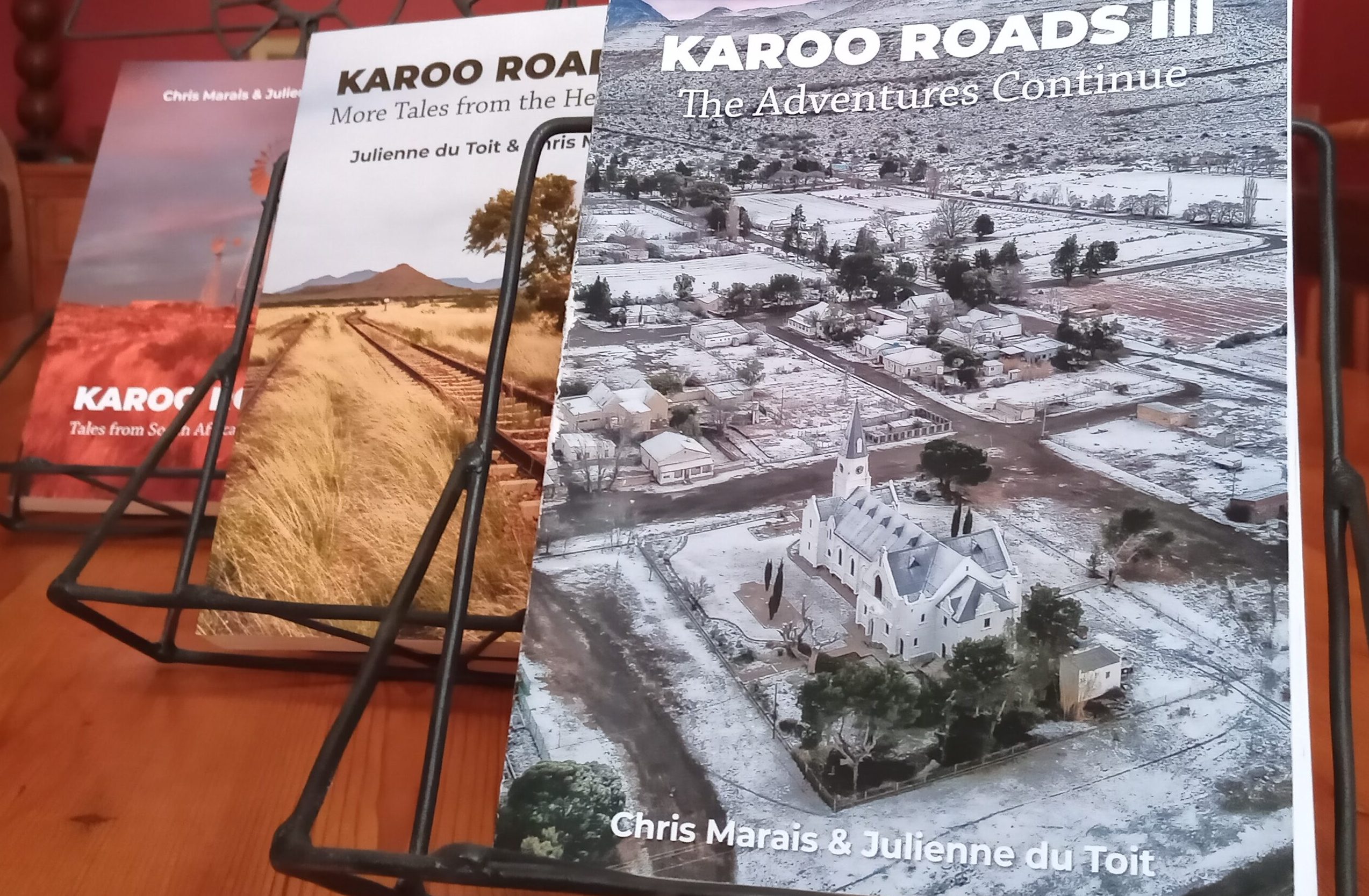
‘Karoo Roads’ Collection. Image: Chris Marais
For an insider’s view on life in the Dry Country, get the three-book special of Karoo Roads I, Karoo Roads II and Karoo Roads III for only R800, including courier costs in South Africa. For more details, contact Julie at [email protected]
In case you missed it, also read Mountain Zebra National Park – back from the brink






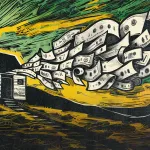










Comments - Please login in order to comment.